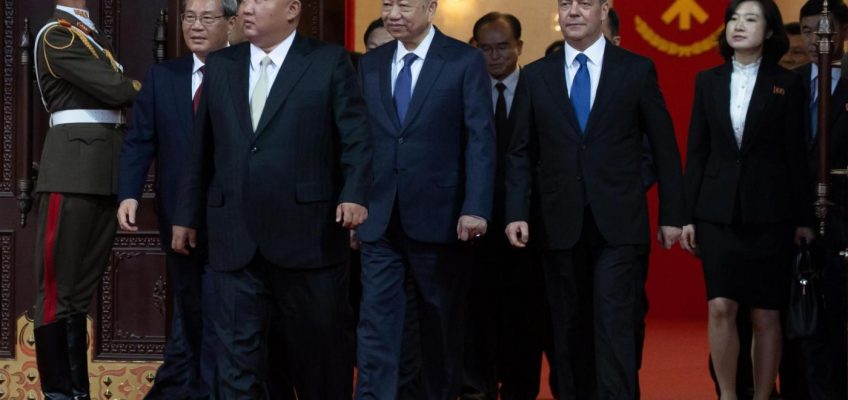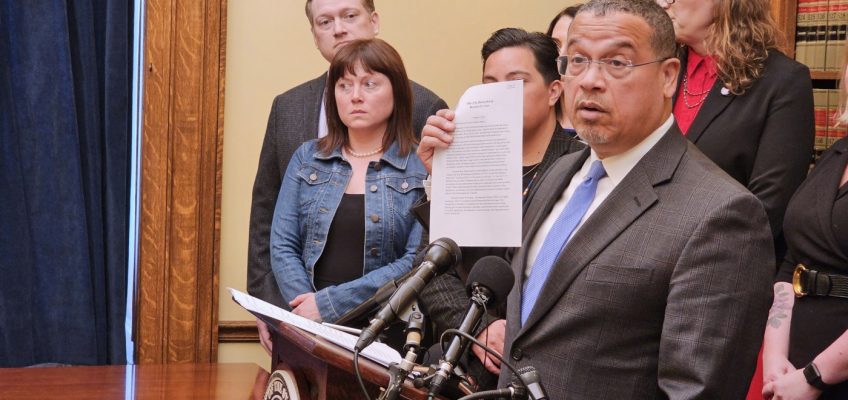By WILL WEISSERT, Associated Press
WASHINGTON (AP) — AstraZeneca on Friday became the second major pharmaceutical manufacturer to announce it had agreed to lower the cost of prescription drugs for Medicaid under a deal struck with the Trump administration that avoided its threats of steep tariffs.
President Donald Trump made the announcement in the Oval Office with AstraZeneca CEO Pascal Soriot, who said that during tough negotiations to reach a deal, Trump and his team of officials had “really kept me up at night.”
Under the agreement, AstraZeneca will charge most-favored-nation pricing to Medicaid, while guaranteeing such pricing on newly launched drugs, Trump said. That involves matching the lowest price offered in other developed nations.
“For many years, Americans have paid the highest prices in the world for prescription drugs, by far,” Trump said, adding that the new deal may cut prices to “the lowest price anywhere in the world. That’s what we get.”
Federal judge rules Trump administration cannot put conditions on domestic violence grants
Melania Trump says 8 kids displaced by Russia-Ukraine war reunite with families after Putin talks
Air traffic controllers who duck unpaid work during the shutdown could be fired, Duffy warns
Qatari facility to be built in Idaho, Defense Secretary Hegseth says
Young Republicans challenge 2020 census results as part of wider GOP attack on head count
AstraZeneca’s deal follows a similar agreement Pfizer announced late last month. Advocates have generally praised the administration’s efforts to cut drug prices, though some have expressed concerns that too much onus is being placed on the manufacturers to lower costs without implementing U.S. policy safeguards to ensure such outcomes.
Both agreements, however, build on an executive order Trump signed in May that set a deadline for drugmakers to electively lower prices or face new limits on what the government will pay. Trump had suggested that a series of deals with drug companies would subsequently be coming.
“The tariffs were a big reason he came here,” Trump said of Soriot.
Cambridge, United Kingdom-based AstraZeneca makes a range of cancer treatments. Its products include the lung cancer drug Tagrisso; Lynparza, an oral treatment for ovarian cancer, and Calquence, which treats chronic lymphocytic leukemia.
Those drugs brought in a total of more than $7.5 billion in U.S. sales last year.
AstraZeneca announced Thursday that it would spend $4.5 billion on a new manufacturing plant near Charlottesville, Virginia, and its Republican governor, Glenn Youngkin, spoke during Friday’s Oval Office announcement to cheer groundbreaking on the new facility.
The drugmaker said that project was the centerpiece of $50 billion in investments the company plans to make in the U.S. by 2030.
AstraZeneca said it plans to reach $80 billion in total revenue by then, half of which will be generated in the United States.
Trump predicted the investment’s could lead to 3,600 jobs domestically “just to begin with.”
One of the AstraZeneca drugs was already subject to price reductions due to a Medicare negotiating strategy implemented under President Biden. Still, Trump insisted that Democrats shouldn’t “get credit” and suggested the party’s key leaders may try.
The announcements came months after AstraZeneca said it was scrapping plans to expand a vaccine manufacturing plant in its home country. The company blamed several factors, including reduced government financial support.
The Trump administration has put up a landing page for its new website, TrumpRX.gov, where people will be able to buy drugs directly from manufacturers, according to officials. Both Pfizer and AstraZeneca will offer medications through the site, according to the administration.
The website’s landing page features two very large pictures of Trump and a promise that the site is “Coming Soon” in January 2026.
It says at the bottom of the page that the site was “Designed in DC by The National Design Studio,” the new government website design hub that Trump created by executive order in August, which is being led by Airbnb co-founder Joe Gebbia.
Associated Press writers Tom Murphy and Michelle L. Price contributed to this report.




